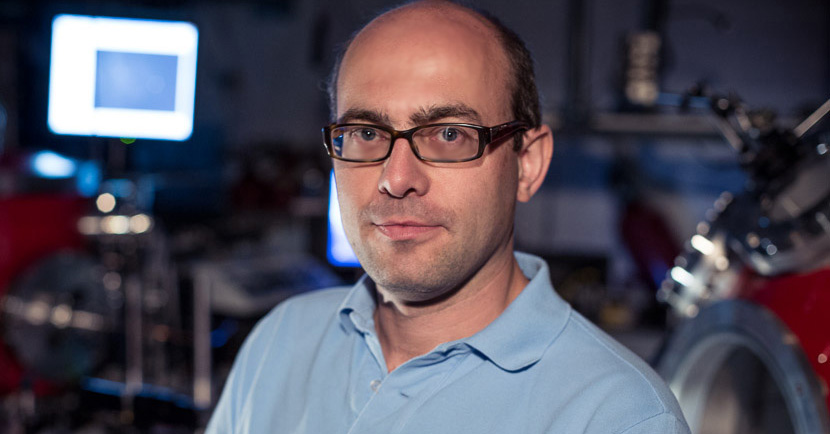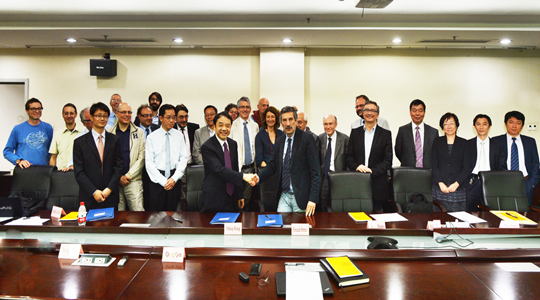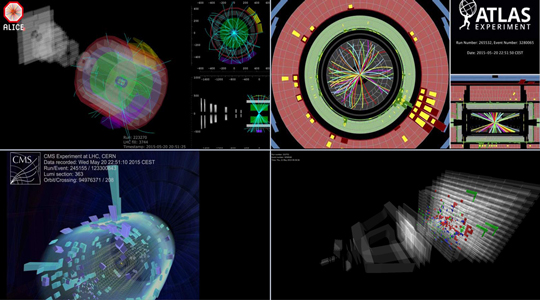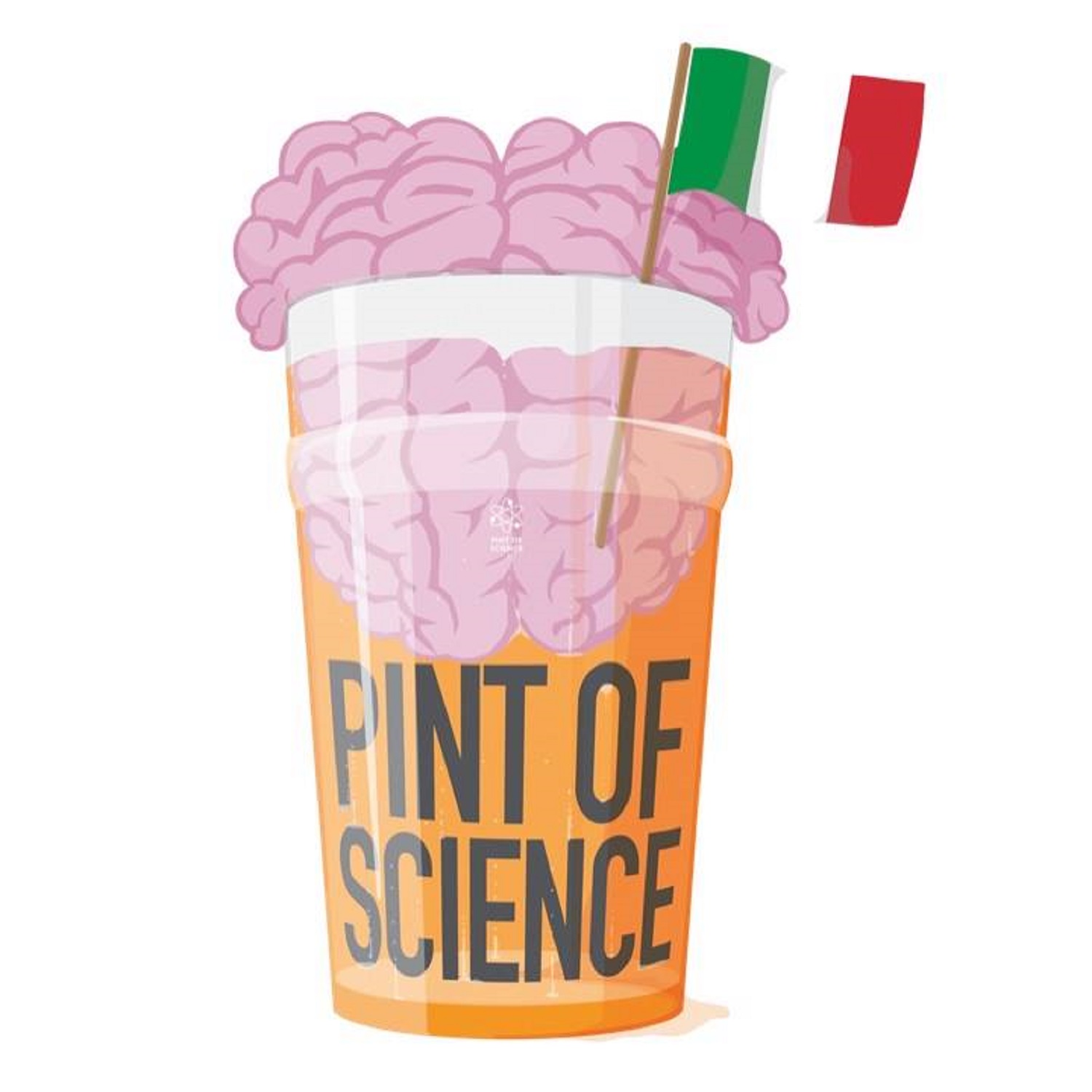NADIA PASTRONE CHAIRMAN OF THE INFN COMMITTEE FOR PARTICLE PHYSICS
 During its last meeting, the 1st National Scientific Committee of INFN which coordinates the research activities of the institute in the field of high energy physics, elected Nadia Pastrone as Chairperson.
Nadia Pastrone, originating from Asti with a classical education, is married with two children, has a Ph.D. and has worked at the INFN in Turin since 1988. Firstly at the Fermilab (Chicago, USA) and then at CERN (Geneva, Switzerland) she carried out research in particle physics with accelerators, as part of major international collaborations: from 2001 she participated in the CMS (Compact Muon Solenoid) experiment at the Large Hadron Collider (LHC) at CERN, a collaboration involving over 2,000 physicists from 40 different countries. After the construction and installation of the giant experimental device, with the commissioning of the accelerator, CMS collected data that led to the discovery of the Higgs boson (Nobel Prize 2013). Mrs Pastrone, in the period 2012-2014, managed 300 Italian physicists involved in the CMS experiment and is currently working on the project of the equipment for the new phase of the LHC in 2025. He has held scientific teaching, coordination and communication posts, and published approx. 500 papers in international journals. Recently, thanks to a regional project, she created a large radio-tomographic device for the cultural heritage at the Conservation and Restoration Centre of La Venaria Reale. In 2014 she received the Ravani Pellati Prize for Physics from the Turin Academy of Sciences.
During its last meeting, the 1st National Scientific Committee of INFN which coordinates the research activities of the institute in the field of high energy physics, elected Nadia Pastrone as Chairperson.
Nadia Pastrone, originating from Asti with a classical education, is married with two children, has a Ph.D. and has worked at the INFN in Turin since 1988. Firstly at the Fermilab (Chicago, USA) and then at CERN (Geneva, Switzerland) she carried out research in particle physics with accelerators, as part of major international collaborations: from 2001 she participated in the CMS (Compact Muon Solenoid) experiment at the Large Hadron Collider (LHC) at CERN, a collaboration involving over 2,000 physicists from 40 different countries. After the construction and installation of the giant experimental device, with the commissioning of the accelerator, CMS collected data that led to the discovery of the Higgs boson (Nobel Prize 2013). Mrs Pastrone, in the period 2012-2014, managed 300 Italian physicists involved in the CMS experiment and is currently working on the project of the equipment for the new phase of the LHC in 2025. He has held scientific teaching, coordination and communication posts, and published approx. 500 papers in international journals. Recently, thanks to a regional project, she created a large radio-tomographic device for the cultural heritage at the Conservation and Restoration Centre of La Venaria Reale. In 2014 she received the Ravani Pellati Prize for Physics from the Turin Academy of Sciences.




 Professor Patrizio Antici, associated to INFN, has been elected Fellow of the European Physical Society for his outstanding contribution to physics. “It’s a great honour to be part of such an elite scientific group, and I am very touched by this recognition,” said Professor Antici. “It crowns years of work within the research community, work that has produced such impressive results as the Extreme Light Infrastructure.” Professor Antici is one of seven new fellows elected in 2015 and one of the youngest scientists to receive this distinction. The European Physical Society has welcomed him as a fellow in recognition of his significant contribution to the creation of major laser and acceleration infrastructure and networks as well as his important work on the development of laser-generated particle sources.
Professor Patrizio Antici, associated to INFN, has been elected Fellow of the European Physical Society for his outstanding contribution to physics. “It’s a great honour to be part of such an elite scientific group, and I am very touched by this recognition,” said Professor Antici. “It crowns years of work within the research community, work that has produced such impressive results as the Extreme Light Infrastructure.” Professor Antici is one of seven new fellows elected in 2015 and one of the youngest scientists to receive this distinction. The European Physical Society has welcomed him as a fellow in recognition of his significant contribution to the creation of major laser and acceleration infrastructure and networks as well as his important work on the development of laser-generated particle sources. Two international agreements between the INFN and the Chinese Institute of High Energy Physics (IHEP) have been signed in Beijing. The agreement was signed by INFN President Fernando Ferroni and IHEP Director Yifang Wang during the bilateral meeting between the two scientific institutes, which recently took place in the Chinese capital. “Since 2013 the INFN-IHEP Virtual Lab has been operational, with the aim of promoting cooperation between the two institutes - explained Rinaldo Baldini, coordinator of the Virtual Lab, at the origin of these bilateral agreements. At present, this collaboration within the scope of the Virtual Lab concerns activities which are based in China, in particular the JUNO, DAMPE, HAASO and BESIII scientific projects. The agreements just signed - added Baldini - now put the seal on these activities.” Covered by the agreements are two joint training and research projects. The first is an INFN-IHEP co-funded postdoctoral fellowship programme, lasting one or two years, for BESIII and JUNO, and possibly other future collaborations between the two institutes. The second, on the other hand, concerns the funding by IHEP to INFN of one of the three PhD School of Electrical Engineering, Electronics and Communications scholarships of the Politecnico di Torino, under an agreement with INFN. On the sidelines of the bilateral meeting, it was also decided to proceed with the designation of the two selection committees, in order to immediately establish the fellowship programme for the BESIII and JUNO collaborations. “These agreements, via a significant joint financial commitment, represent an important opportunity to give further substance and efficacy to the Joint IHEP-INFN Laboratory - said Marco Maggiora, coordinator of the BESIII group of the INFN Turin section. They indeed offer important opportunities for professional and academic growth to young Italian and Chinese researchers.” “These are very important agreements - added Amedeo Staiano, Director of the INFN Turin section - that strengthen contacts between INFN and IHEP and lay the foundation for future collaborations. On the one hand, in fact, young scholars associated with INFN programmes can carry out research at IHEP, as happens with similar programmes at CERN in Geneva. On the other - concluded Staiano -, Chinese students will have the opportunity to be trained in prestigious institutes such as INFN and the Politecnico di Torino.”
Two international agreements between the INFN and the Chinese Institute of High Energy Physics (IHEP) have been signed in Beijing. The agreement was signed by INFN President Fernando Ferroni and IHEP Director Yifang Wang during the bilateral meeting between the two scientific institutes, which recently took place in the Chinese capital. “Since 2013 the INFN-IHEP Virtual Lab has been operational, with the aim of promoting cooperation between the two institutes - explained Rinaldo Baldini, coordinator of the Virtual Lab, at the origin of these bilateral agreements. At present, this collaboration within the scope of the Virtual Lab concerns activities which are based in China, in particular the JUNO, DAMPE, HAASO and BESIII scientific projects. The agreements just signed - added Baldini - now put the seal on these activities.” Covered by the agreements are two joint training and research projects. The first is an INFN-IHEP co-funded postdoctoral fellowship programme, lasting one or two years, for BESIII and JUNO, and possibly other future collaborations between the two institutes. The second, on the other hand, concerns the funding by IHEP to INFN of one of the three PhD School of Electrical Engineering, Electronics and Communications scholarships of the Politecnico di Torino, under an agreement with INFN. On the sidelines of the bilateral meeting, it was also decided to proceed with the designation of the two selection committees, in order to immediately establish the fellowship programme for the BESIII and JUNO collaborations. “These agreements, via a significant joint financial commitment, represent an important opportunity to give further substance and efficacy to the Joint IHEP-INFN Laboratory - said Marco Maggiora, coordinator of the BESIII group of the INFN Turin section. They indeed offer important opportunities for professional and academic growth to young Italian and Chinese researchers.” “These are very important agreements - added Amedeo Staiano, Director of the INFN Turin section - that strengthen contacts between INFN and IHEP and lay the foundation for future collaborations. On the one hand, in fact, young scholars associated with INFN programmes can carry out research at IHEP, as happens with similar programmes at CERN in Geneva. On the other - concluded Staiano -, Chinese students will have the opportunity to be trained in prestigious institutes such as INFN and the Politecnico di Torino.” Last night, protons collided in the Large Hadron Collider (LHC) at the record-breaking energy of 13 teraelectronvolts (TeV) for the first time. These test collisions were to set up systems that protect the machine and detectors from particles that stray from the edges of the beam. A key part of the process was the set-up of the collimators. These devices which absorb stray particles were adjusted in colliding-beam conditions. This set-up will give the accelerator team the data they need to ensure that the LHC magnets and detectors are fully protected. Today the tests continue. Colliding beams will stay in the LHC for several hours. The LHC Operations team will continue to monitor beam quality and optimisation of the set-up. This is an important part of the process that will allow the experimental teams running the detectors ALICE, ATLAS, CMS, LHCb, LHCf, MOEDAL and TOTEM to switch on their experiments fully. Data taking and the start of the LHC's second run is planned for early June. source: www.cern.ch
Last night, protons collided in the Large Hadron Collider (LHC) at the record-breaking energy of 13 teraelectronvolts (TeV) for the first time. These test collisions were to set up systems that protect the machine and detectors from particles that stray from the edges of the beam. A key part of the process was the set-up of the collimators. These devices which absorb stray particles were adjusted in colliding-beam conditions. This set-up will give the accelerator team the data they need to ensure that the LHC magnets and detectors are fully protected. Today the tests continue. Colliding beams will stay in the LHC for several hours. The LHC Operations team will continue to monitor beam quality and optimisation of the set-up. This is an important part of the process that will allow the experimental teams running the detectors ALICE, ATLAS, CMS, LHCb, LHCf, MOEDAL and TOTEM to switch on their experiments fully. Data taking and the start of the LHC's second run is planned for early June. source: www.cern.ch Sorseggiare una birra discutendo di bosone di Higgs e buchi neri. Approda per la prima volta in Italia Pint of Science, la manifestazione nata nel 2012 nel Regno Unito per divulgare la scienza nei pub. Grazie anche alla partecipazione dell’INFN, dal 18 a 20 maggio sei città italiane, Genova, Trento, Siena, Roma Pavia e Milano - in contemporanea con 50 città di altri 8 Paesi del mondo, Gran Bretagna, Irlanda, Brasile, Francia, Stati Uniti, Australia, Spagna e Germania -, ospiteranno seminari divulgativi gratuiti. Tra una pinta di birra e l’altra, sarà possibile discutere di nuove frontiere della scienza, come lo studio delle onde gravitazionali, predette da Albert Einstein un secolo fa nella relatività generale e mai osservate finora direttamente, o della bizzarra correlazione a distanza delle particelle, nota come
Sorseggiare una birra discutendo di bosone di Higgs e buchi neri. Approda per la prima volta in Italia Pint of Science, la manifestazione nata nel 2012 nel Regno Unito per divulgare la scienza nei pub. Grazie anche alla partecipazione dell’INFN, dal 18 a 20 maggio sei città italiane, Genova, Trento, Siena, Roma Pavia e Milano - in contemporanea con 50 città di altri 8 Paesi del mondo, Gran Bretagna, Irlanda, Brasile, Francia, Stati Uniti, Australia, Spagna e Germania -, ospiteranno seminari divulgativi gratuiti. Tra una pinta di birra e l’altra, sarà possibile discutere di nuove frontiere della scienza, come lo studio delle onde gravitazionali, predette da Albert Einstein un secolo fa nella relatività generale e mai osservate finora direttamente, o della bizzarra correlazione a distanza delle particelle, nota come 

